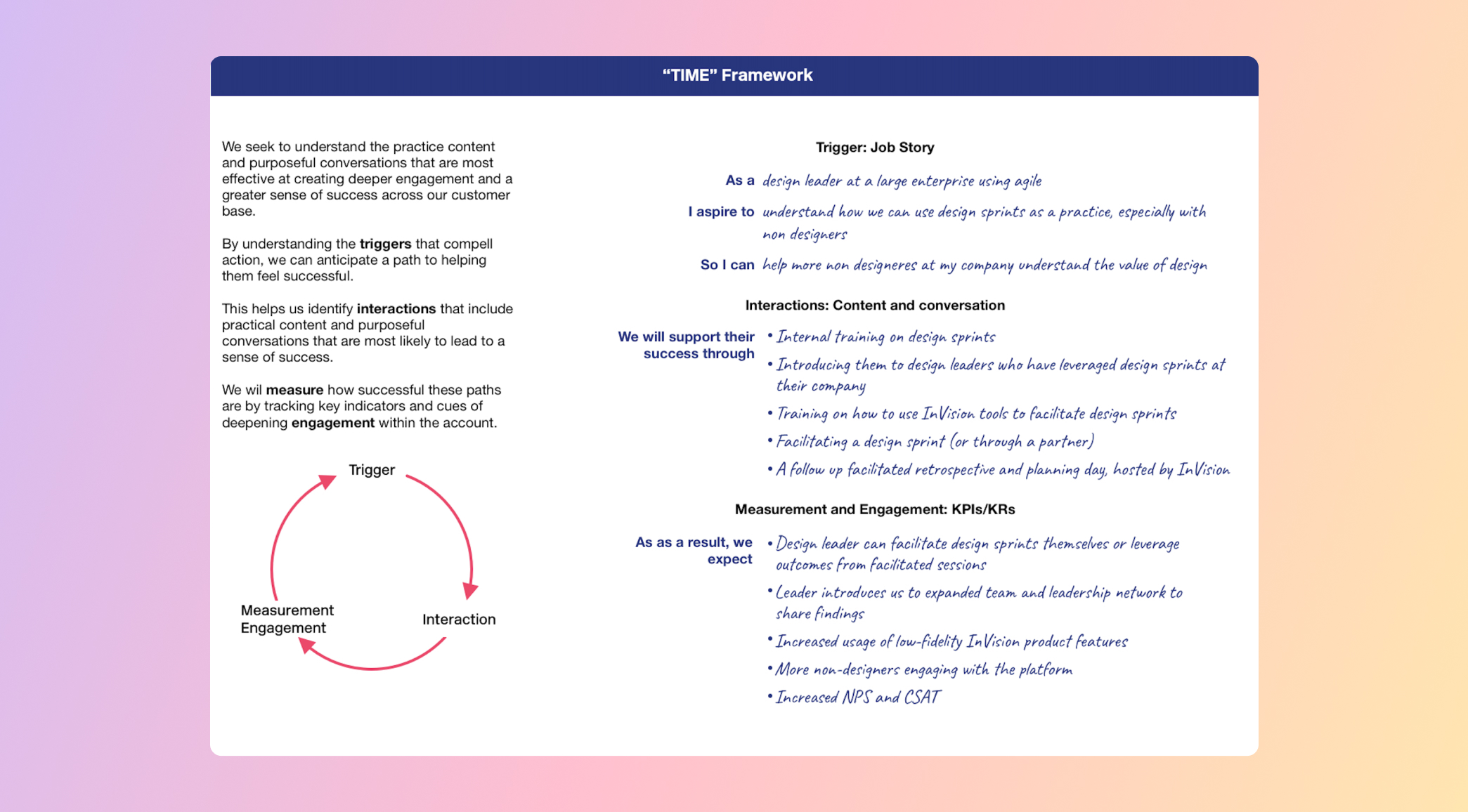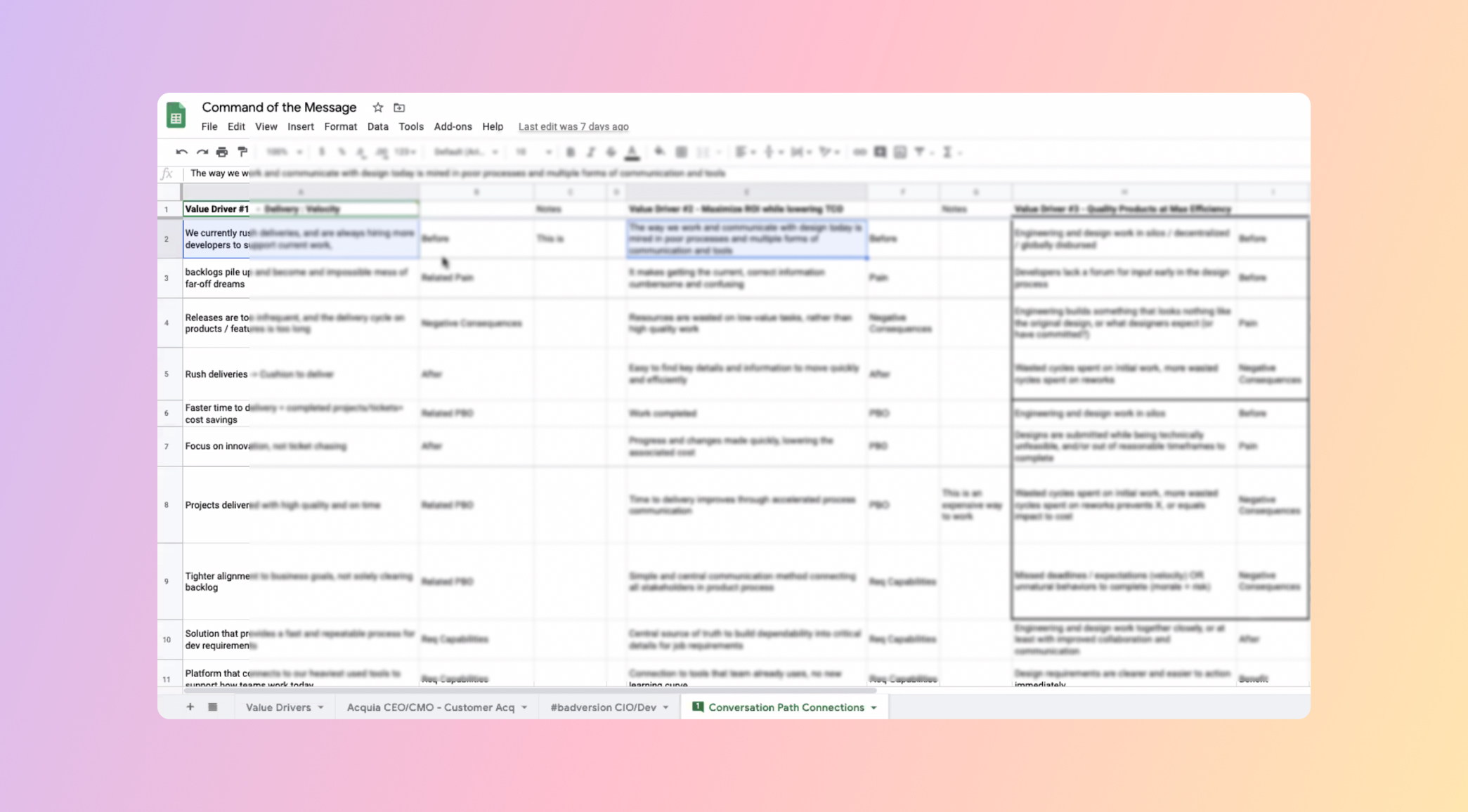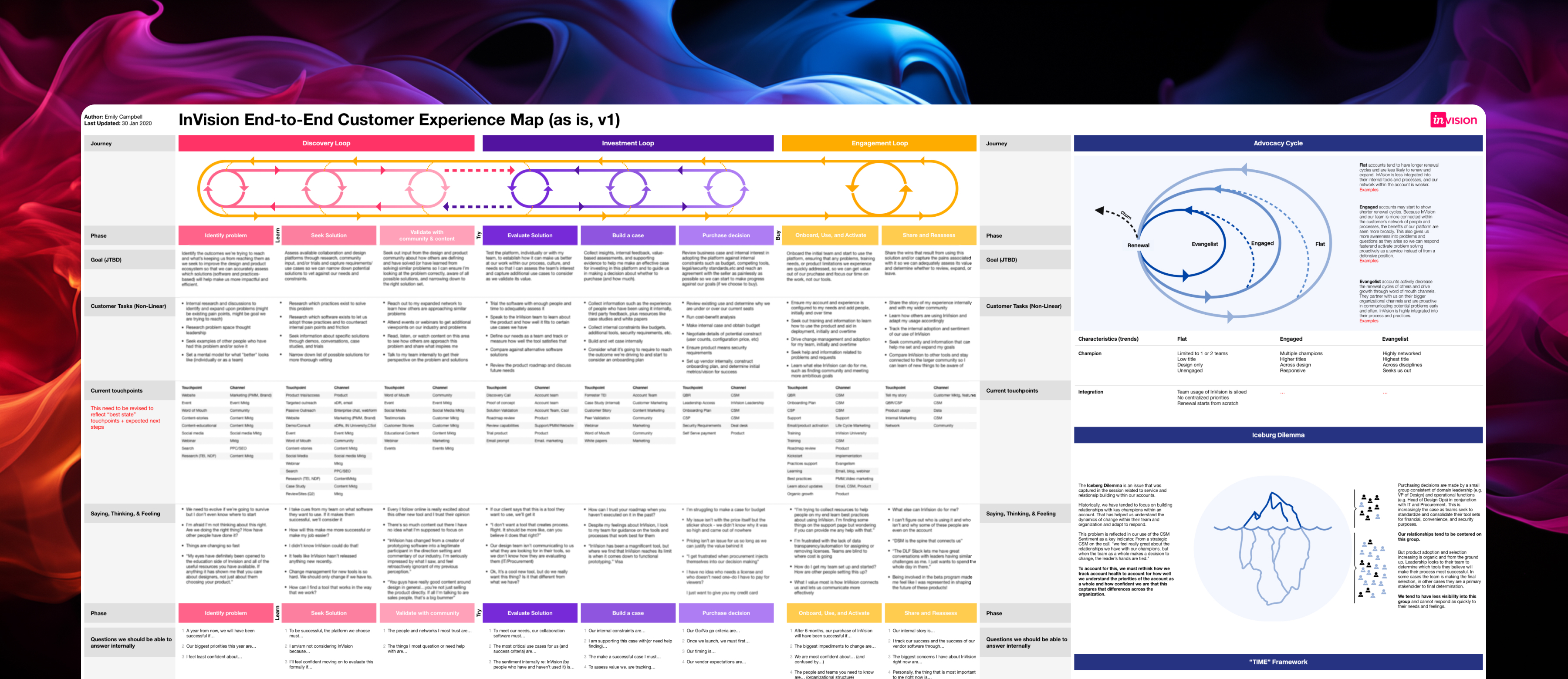
Facilitating a unified understanding of the customer experience
Our customer was changing. More people in their companies across departments were using the product, and our understanding of their use cases had not kept up. As director of Experience strategy, I identified the need for a shared understanding of our customer personas, a shared narrative for the value we could bring into their work lives, and a unified map across the customer experience to help people on our end navigate the fog and deliver the right value and information at the right time to the right person.
Impact
I managed a 30-person project developing a framework that became a foundational piece in the GTM strategy at InVision. We defined core buyer personas, customer experience touchpoints and channels, and a strategy to integrate an improved framework across the business using cross-functional resources and knowledge. This was integrated into the customer-facing-team's enablement programs, and helped the company navigate the collective challenges of substantial competitor risk and COVID
Role
Project leadership, facilitator, experience strategy, design researcher
Team
30 cross-functional partners from across InVision
Building a shared understanding
For this project I needed to have people from across the company involved. To make the most of everyone's time, I assembled 5 cross-functional teams, each tasked with gaining a deeper understanding of the experience of a specific persona along the full customer experience. In later phases, I combined the findings across all of the squads to identify ways the personas intersected (but we'll talk about that in a moment).
InVision was a fully remote team, so I gathered each squad for a 90-minute workshop in which we mapped our understanding of the experience today, grouped key themes of touchpoint, pain points, opportunities, and specific anecdotes we have heard directly from customers to help us understand what they are thinking or feeling any any given time.
I intentionally let this be a messy, generative process, staying firmly in the role of facilitator. Each squad took things in a slightly different direction, but the result was a broad set of data points that could be simplified into our current best assumption about a customer's experience interacting with us from the moment we hit their radar until renewal.
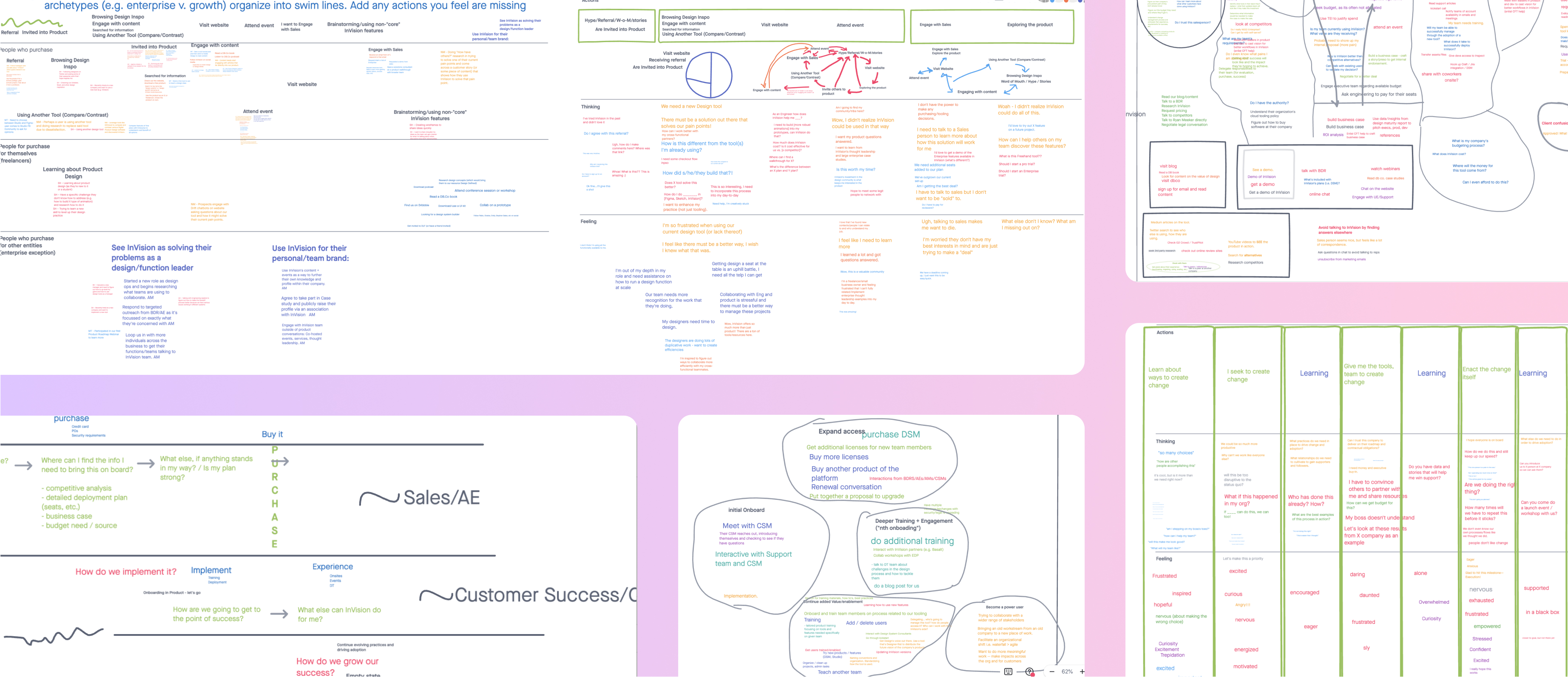
After a short period of reviewing and organizing the whiteboards, I brought the full team together to talk through it together. The intent of this exercise was to give everyone visibility into each others' work, and make sure we weren't missing anything glaring.
Next, each squad was tasked with taking our initial assessment and assumptions and validating them against the actual voice of the customer.
Now if you're thinking at this point, this sounds like it was a heavy use of time, you're right. That was a risk I was concerned about with this project. How do I keep people motivated when this isn't their primary job, and how do I make sure leadership was seeing useful results fast enough that they continued to support this investment?
One option was to do it all myself. That wasn't the right approach. Our problem was that we lacked a shared understanding, which led to misalignments and wasted time since we weren't all chasing the same goal. I knew I needed this to be a collaborative effort to be effective.
Instead, I worked with each squad to identify a lead who could run their part of the project. This gave me a smaller group of people to stay directly connected with, and who could give me an early heads up when they needed extra help. On top of this, I devoted 100% of my time to supporting the squads, filling in gaps and running background work to help with everything from operations and scheduling to facilitation and synthesis.
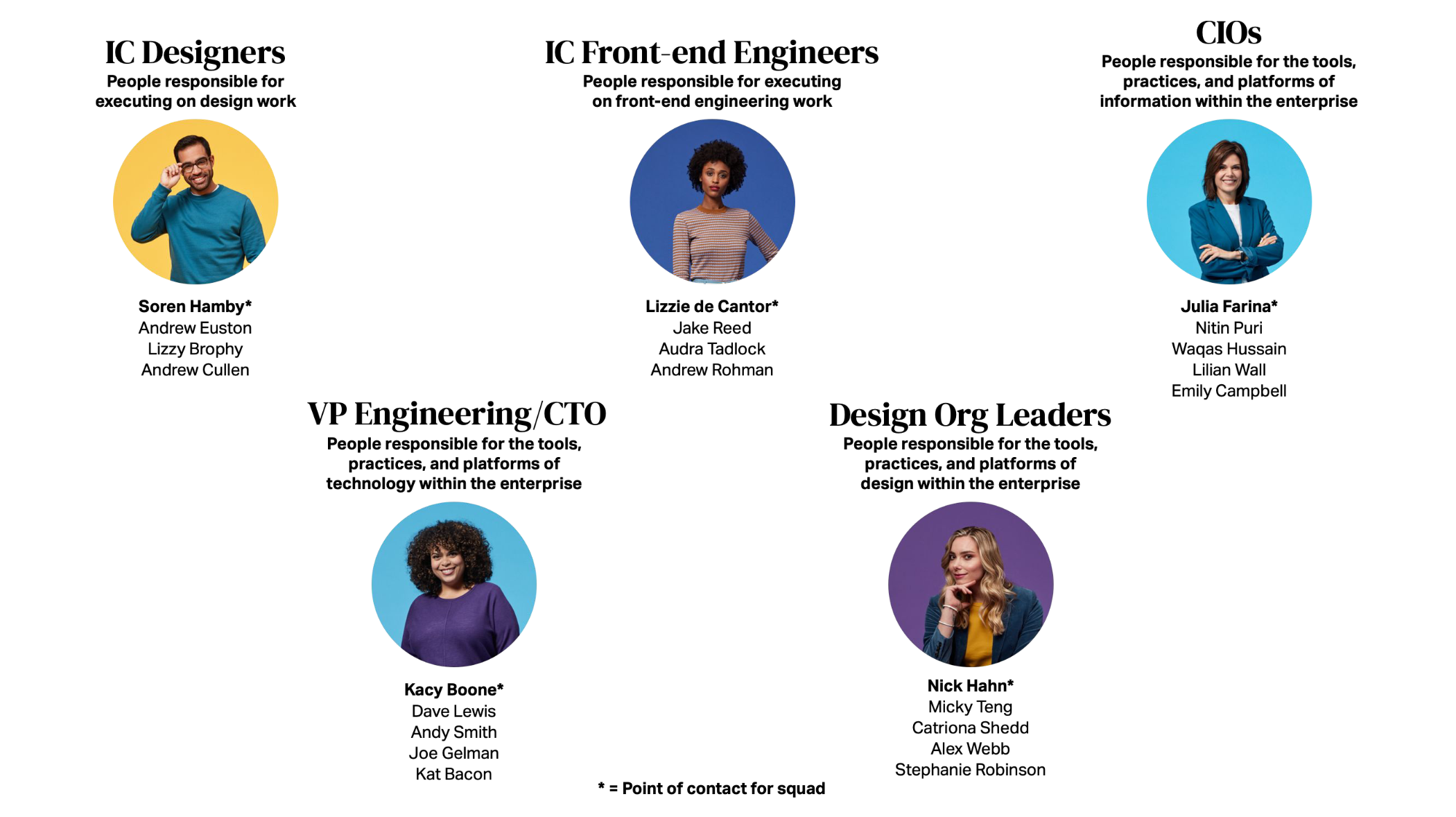
Initial findings
I was optimistic about the potential impact of this project, and it immediately exceeded my expectations.
As each squad conducted their customer interviews, they started to identify new learnings that they could apply directly to their work. For example, the group focused on the IT and Technical leaders immediately picked up that there was a clear customer segmentation that mapped to the role of the CIO. The more that individual saw their role as transformational, the higher the design maturity of the customer overall was likely to be.
I don't have pictures of the company Slack, but imagine, if you will, red dots popping up in channels as people enthusiastically shared their insights and started thinking differently about how to move forward together.
Once the interviews were done and I had worked with the squads on initial review of their findings, I gave them each a template to fill out that would later be the basis for the summary I presented on each persona. Then, I got to work on organizing the overall findings and forming a cohesive narrative
Something started to emerge quickly for me. Up until this point people across the company had been looking at single moments or segments in a complicated journey. As a company, we had done a great job sending a narrative for the value of design, but we weren't effectively transmitting that information and trust into the buying cycle. Additionally, customers were reaching the product but couldn't connect with how the features of the product itself linked back to the larger narrative we were setting around design maturity.
There were three distinct loops of engagement in the customer lifecycle:
- 🟢 The discovery moments when we were building trust around thought leadership and the value of design. We were excelling here.
- 🟡 The investment moments, when customers had to decide whether to actually buy or renew our product. We did well when we were speaking to someone who trusted us from the learning moments but we were not effectively reaching others or building trust that we could solve their needs.
- 🔴 The engagement moments, when customers actually used the product. In these, we were failing. We were setting a narrative of transformation and impact, but failing to demonstrate or deliver on how our product could actually help them meet this vision.

Packaging the narrative
Up to this point the project had been a success. Despite a rather daunting ask of multiple people across the company, the effort had energized teams to share ideas, think outside of their immediate scope, and begin to re-evaluate their strategies.
The next step was to bring in leadership and expand visibility of the findings outside of the core group.
- I knew the best success of lasting impact would come from sharing ownership and visibility. I made sure each squad was represented in my findings and invited the lead of each squad to help share our results.
- I focused on simplifying our findings and attached any learning to an actionable takeaway.
- Finally, I devised a clear narrative to take people through the learnings, emphasizing the relationships between the personas, the segments within them, and our relative strengths and weaknesses across the different phases of the customer journey.
These were delivered in two forms: a multi-channel experience map, capturing key moments, takeaways, insights, and opportunities in the journey, and a slide deck that could be delivered together or broken out by persona.
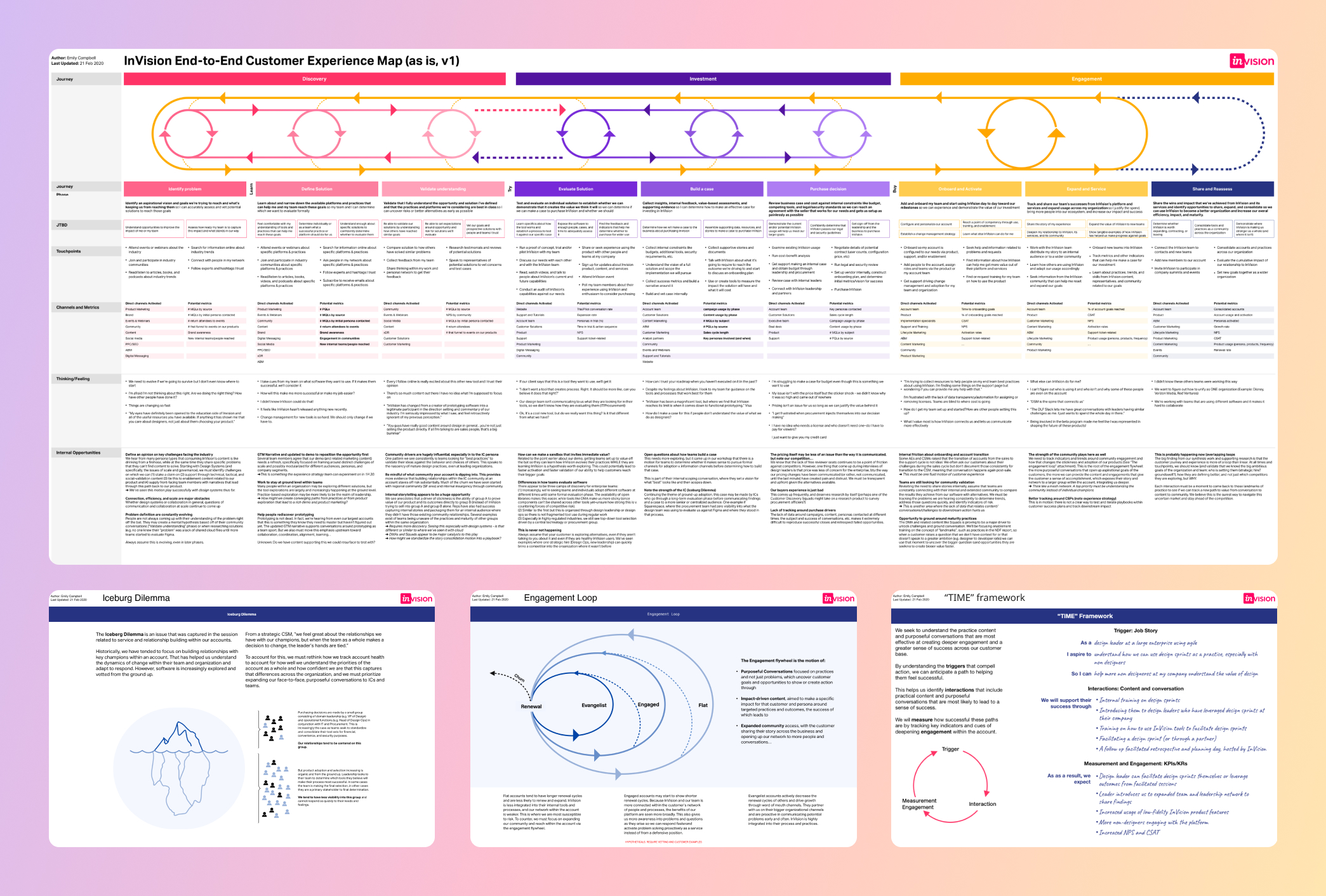
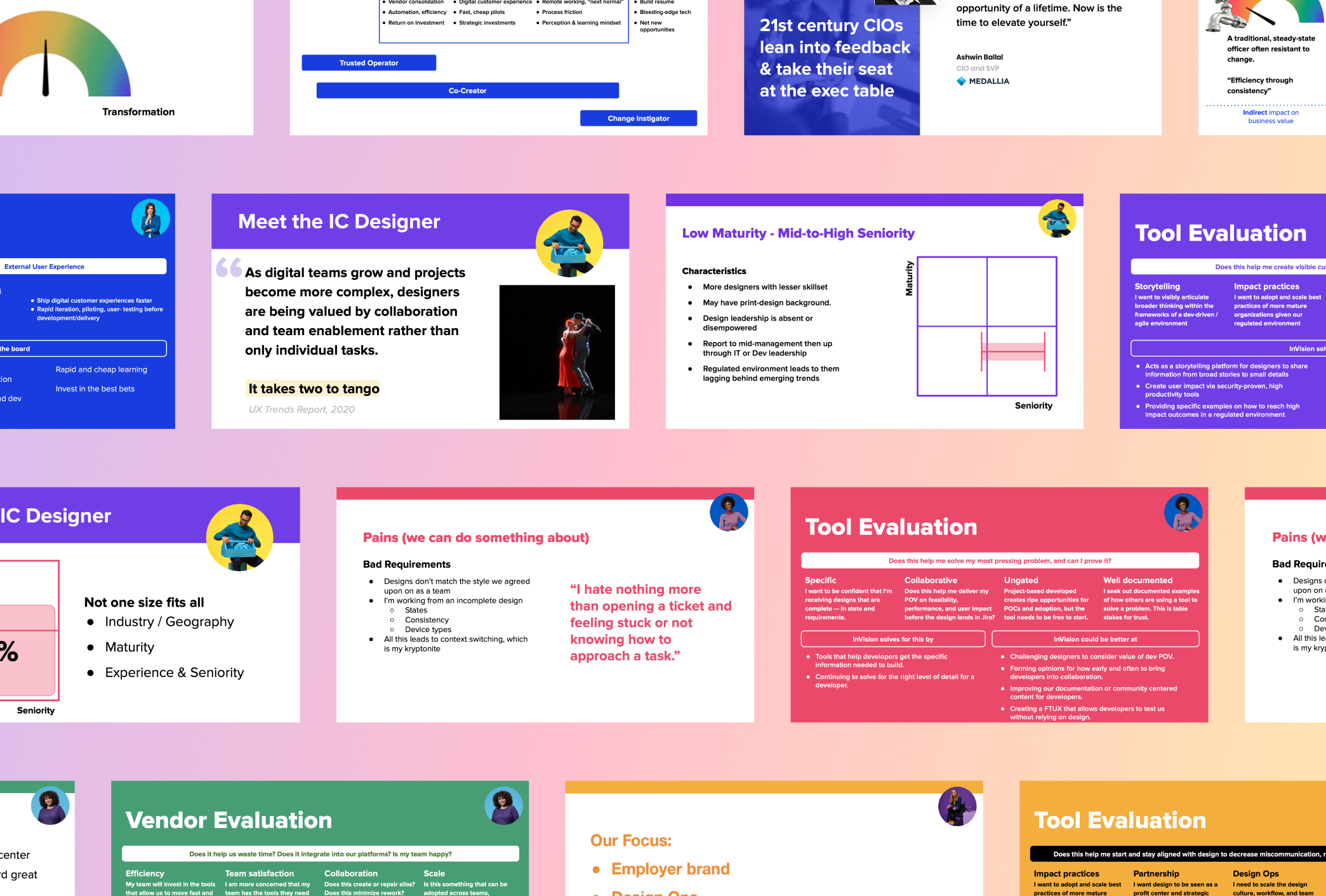
Lasting impact
Culture: This has the immediate effect of creating a shared language about our customers and their needs and the market opportunity. Parts of this narrative were woven into the Marketing and Sales kickoff that occurred a few weeks after I presented final results. Individually, people across all teams involved leaned in to carry the learnings further.
Training: In the following weeks I worked with the head of training and enablement for the customer facing organization to integrate our learnings into their content. They were using the Command of the Message framework, and the narrative we constructed by persona and segment mapped easily into their existing structure.
Value: My peers on the Design Transformation team were already thinking about how the Design Maturity framework could be used to helped lead customers to find more value in the product. When we knew where a company sat in terms of maturity, we could advise and guide them to use the product in a way most appropriate to their relative strengths and opportunities. The findings from this project guided them to more aggressive pursue segment-based product development and marketing, influencing the creation of InVision Learns - a content platform guiding product value by customer segment.
